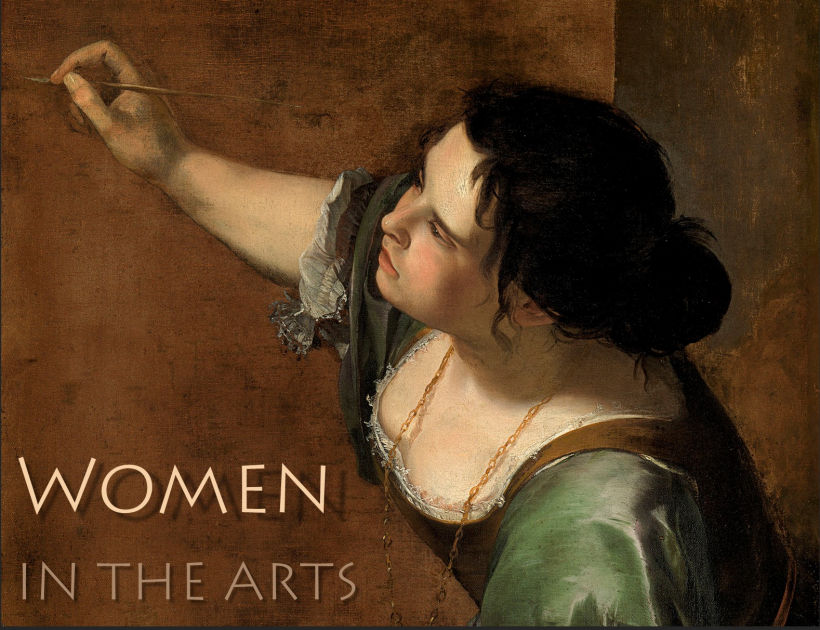2. Behind the Veil.
The five featured artists here—Hildegard von Bingen, Teresa of Avila, Plautilla Nelli, Juana Inés de la Cruz, and
Corita Kent—span nine centuries and five countries: Germany, Spain, Italy, Mexico, and the United States. They are
far more than nuns who happened to compose, write, or paint from their convent cells. All of them had the courage
to challenge current norms and demand reform, fighting both for spiritual commitment and recognition of a woman's
place in society. The time we can devote to each may be brief, but their stories and those of other artists we
encounter along the way will have a cumulative power. Together, they show that arts created behind convent walls
need neither be parochial nor confined to religious subjects.
The script, videos, and images will be posted immediately after class.
Here are brief bios of the artists, composers, and writers considered in the class, listed in order of birth.
All the specific biographies of women featured in the course are collected in the
BIOS link on the syllabus page.
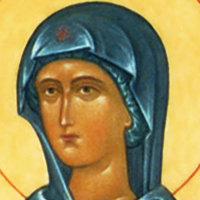 |
Kassia, 0810–65. Byzantine Greek composer.
Kassia is the earliest woman who left signed compositions, all of sacred chant. She was also apparently a poet; her wit made her a candidate to be the bride of Emperor Theophilos, but this came to nothing; she may have been too sharp for him. The image is from later and not a portrait.
|
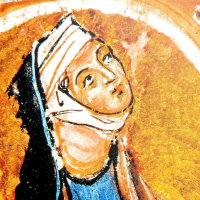 |
Hildegard von Bingen, 1098–1179. German polymath.
Abbess of the monastery of Rupertsberg on the Rhine, and composer of the music drama Ordo Virtutum, she achieved extraordinary fame as a theologian, poet, composer, manuscript illuminator, and natural scientist, becoming known as "The Sibyl of the Rhine." The Catholic Church has long revered her as a saint.
|
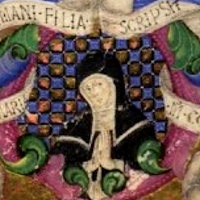 |
Maria Ormani, 1428–70. Italian artist.
When her father, a wealthy nobleman had to flee Florence on the return of the Medici, Maria entered the convent of San Gaggio, renowned for its artistic workshops. Maria contributed to these as a manuscript illuminator and left one tantalizing self-portrait, but nothing else is known about her.
|
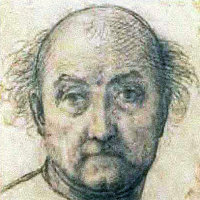 |
Fra Bartolommeo, 1472–1517. Italian painter.
Bartolommeo renounced painting in 1501, when he became a Dominican friar, but he was instructed by his superior to resume, leaving a number of devotional (as opposed to narrative) paintings characterized by their balanced composition and imposing figures. He retained a friendship with Raphael, and there is much cross-influence between the two.
|
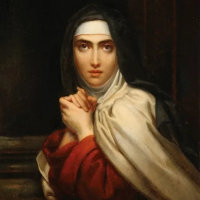 |
Saint Teresa of Ávila, 1515–82. Spanish mystic, poet,.
Saint Teresa was one of the leading figures of the Counterreformation, reforming the Carmelite orders of which she was a member. She is represented in art mainly for her ecstatic descriptions of mystical encounters with the divine, which she records in her published works. Her poetry is simpler, but also refreshingly personal.
|
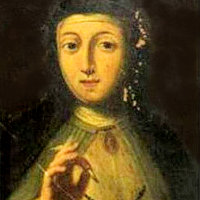 |
Plautilla Nelli, 1534–88. Italian painter.
Nelli is the first recorded female artist working in Florence, and her Last Supper in the church of Santa Maria Novella is the earliest treatment of the subject painted by a woman.
|
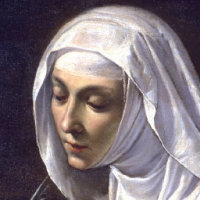 |
Raffaella Aleotti, 1570–1646. Italian composer.
Raffaella Aleotti showed a precocious musical talent, and her teacher suggested she enter the convent of San Vito in Ferrara to further her skills. She published a number of sacred text settings. She may have been either the sister or indeed the same person as Vittoria Aleotta, a nun who also published sacred settings around the same time. The image, which has been used on CD covers, is almost certainly not her portrait.
|
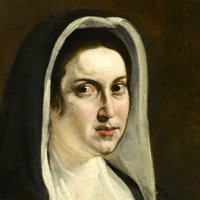 |
Sulpitia Cesis, 1575–1625. Italian composer.
"She was a nun at the convent of S Agostino, Modena, and is known only by her volume of eight part Motetti spirituali published in 1619." [Grove Women Composers]. The image is generic and not a portrait.
|
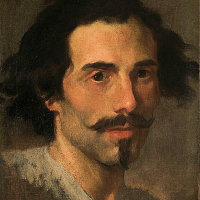 |
Gianlorenzo Bernini, 1598–1680. Italian sculptor and architect.
He is to the Italian Baroque what Michelangelo was to the Renaissance, the supreme master of many arts. The sense of movement and drama in his sculpture carries through into his architecture and even his town planning, such as the piazza before St. Peter's.
|
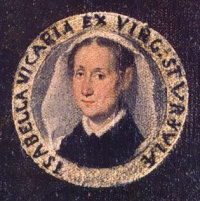 |
Isabella Leonarda, 1620–1704. Italian composer.
The daughter of a noble family from Novara, Isabella entered a convent at age 16 and remained there for the rest of her live, eventually becoming its Superior. She is credited with over 200 compositions published between 1640 and 1700.
|
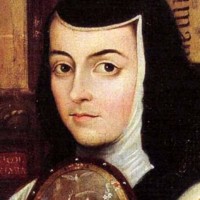 |
Sor Juana Inés de la Cruz, 1648–95. Mexican poet and polymath.
Educating herself mainly by reading in her grandfather's library, Inés showed a precocious talent that caught the attention of the Spanish Vicereine in Mexico, who became her sponsor. Although she entered a convent, her cell became a literary salon, earning her the nickname "The Tenth Muse." But her outspoken writings offended her bishop, who forced her to abandon literary pursuits. She died soon after.
|
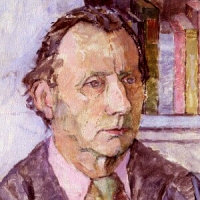 |
Sir Lennox Berkeley, 1903–89. English composer.
Berkeley was a school friend of and occasional collaborator with Benjamin Britten, who has nonetheless eclipsed Berkeley in the eyes of history.
|
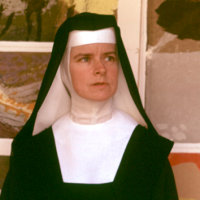 |
Corita Kent, 1918–86. American artist.
Born in Iowa, Frances Elizabeth Kent entered the Californian Sisters of the Immaculate Heart at age 18, and took the name Sister Mary Corita. The order was known for its liberalism and respect for creativity, and Sister Corita flourished, teaching herself silk-screen printing and eventually becoming head of the college art department. But her increasing social activism set her at odds with her Cardinal, and she left the order in 1968 to continue her work on the East Coast under the name Corita Kent.
|
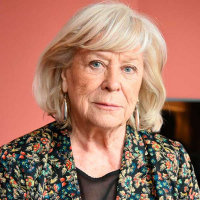 |
Margarethe von Trotta, 1942– . German film director.
Von Trotta is hailed as a leading force in postwar German cinema, and has won many awards. Most of her films have been about women and their relationships.
|
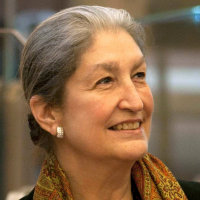 |
Jane Fortune, 1942–2018. American philanthropist.
In addition to her work in the United States (as co-founder, for example, of the Indianapolis Ballet), Fortune has made a great impact in Florence with a series of projects to document and restore the work of artists who were women. Her foundation Advincing Women Artists continues that work today.
|
 |
Daniel Crozier, 1965– . American composer.
Crozier's 1990 opera With Blood, With Ink, to a libretto by Peter Krask about Sor Juana Inés de la Cruz, won first prize at the National Opera Association, was featured in a showcase of the New York City Opera, and received its professional premiere by the Fort Worth Opera in 2015. Crozier has also received significant awards for his instrumental work. He teaches at Rollins College, Florida.
|
 |
Peter Krask, 1966– . American writer and photographer.
Krask's 1990 libretto With Blood, With Ink about Sor Juana Inés de la Cruz was set to music by Daniel Crozier. Their opera won first prize at the National Opera Association, was featured in a showcase of the New York City Opera, and received its professional premiere by the Fort Worth Opera in 2015. In addition to other writing projects, Krask has built up a portfolio as a photographer and run his own floral design business. He currently serves as a mentor and creative coach for institutions on both sides of the Atlantic.
|










































